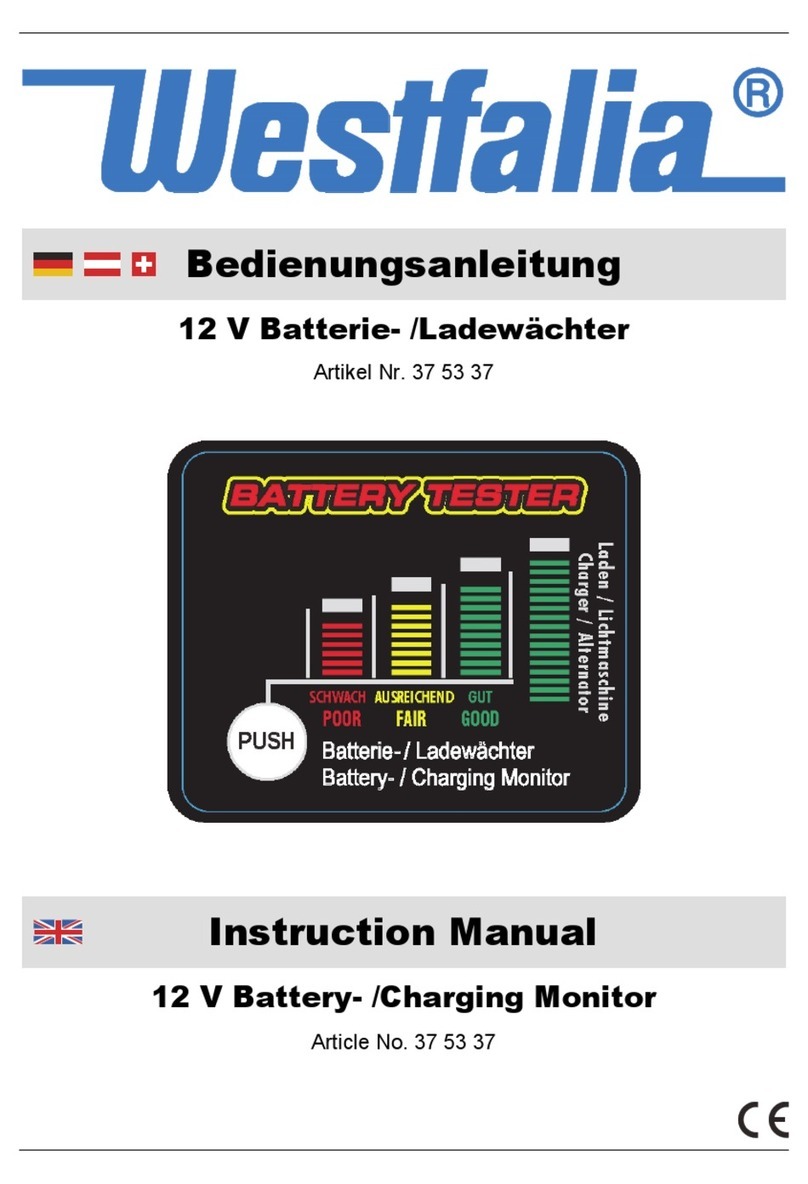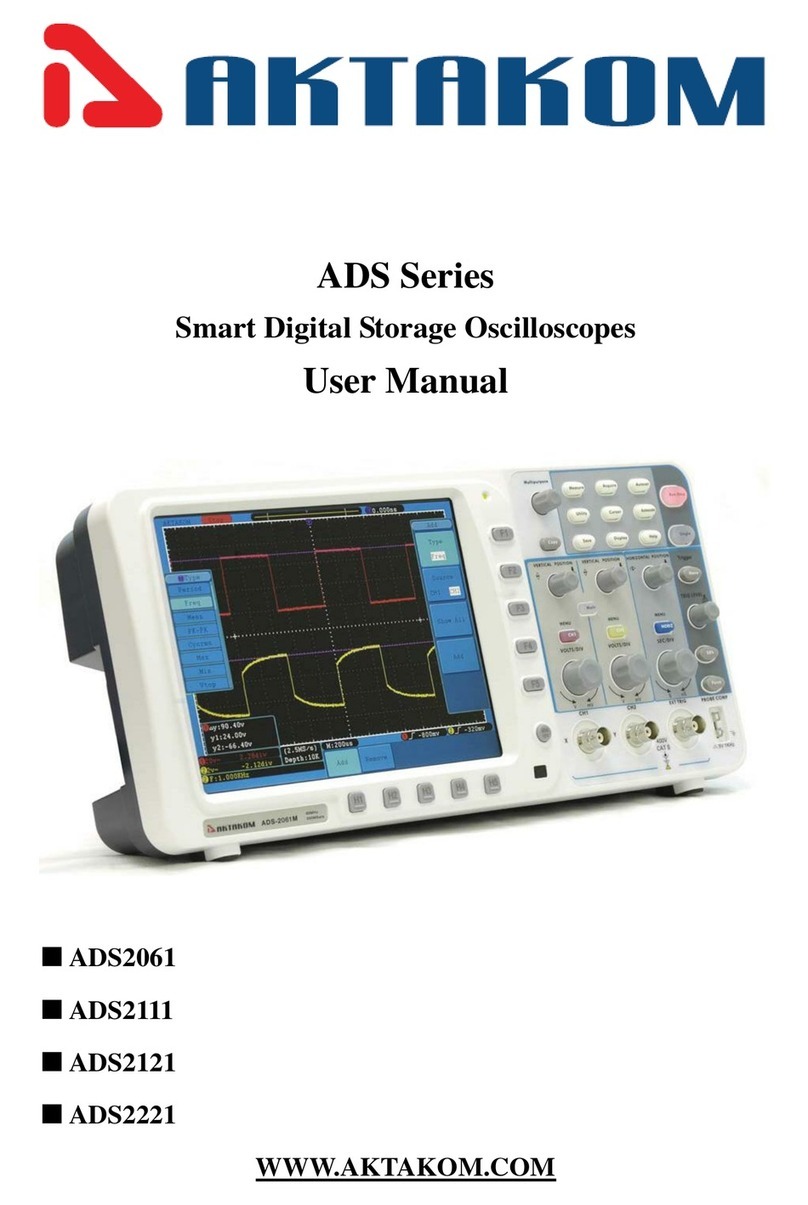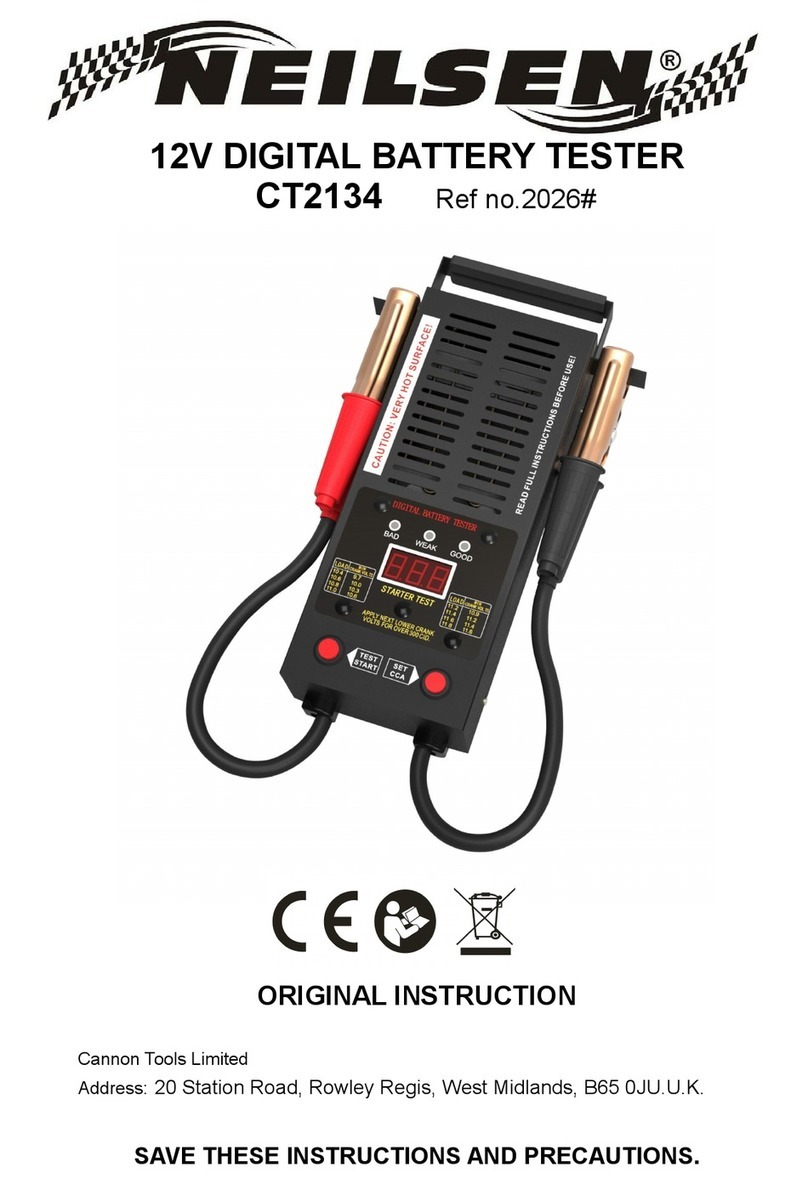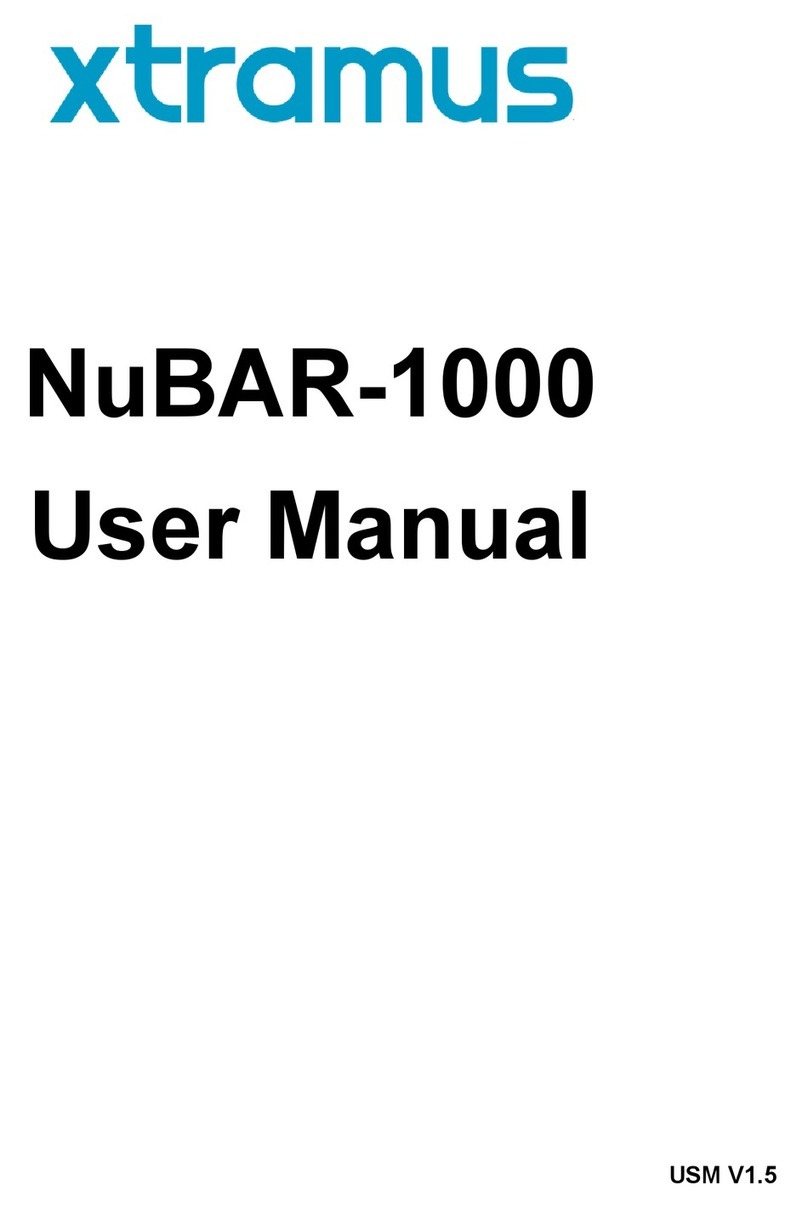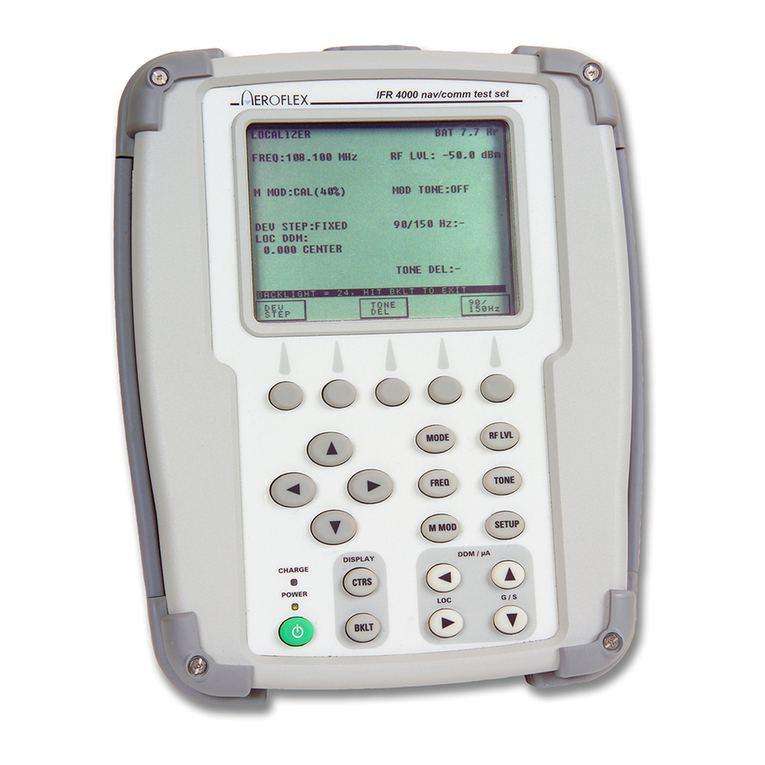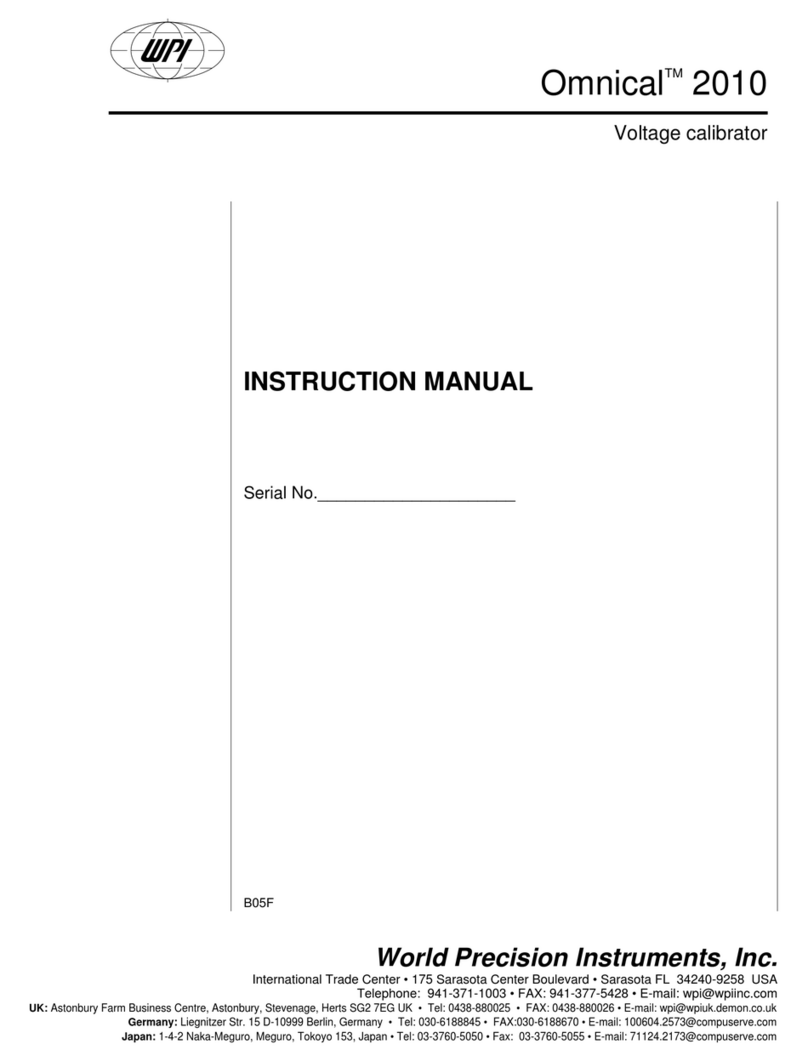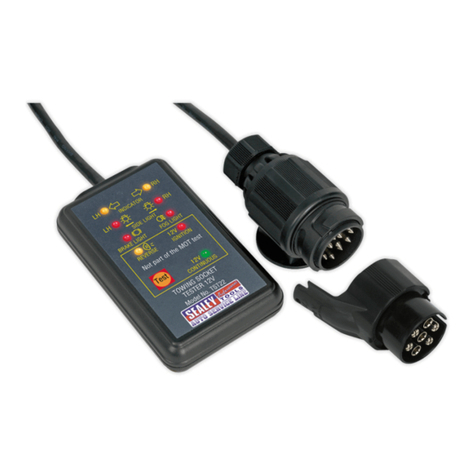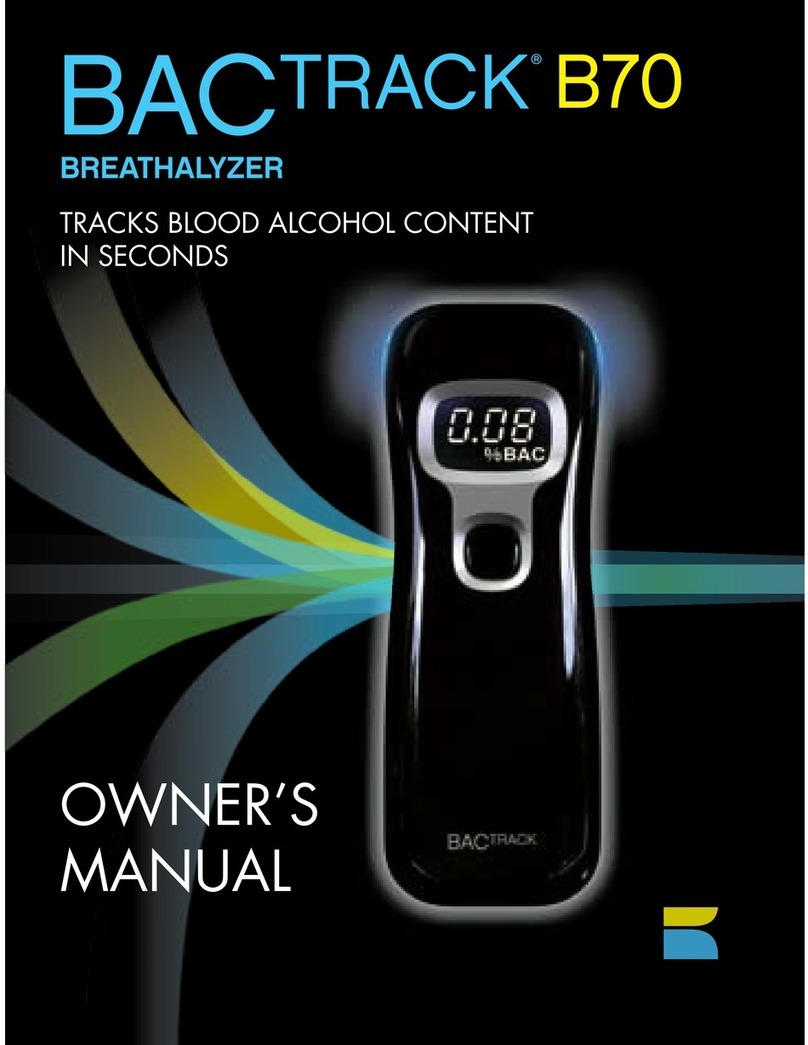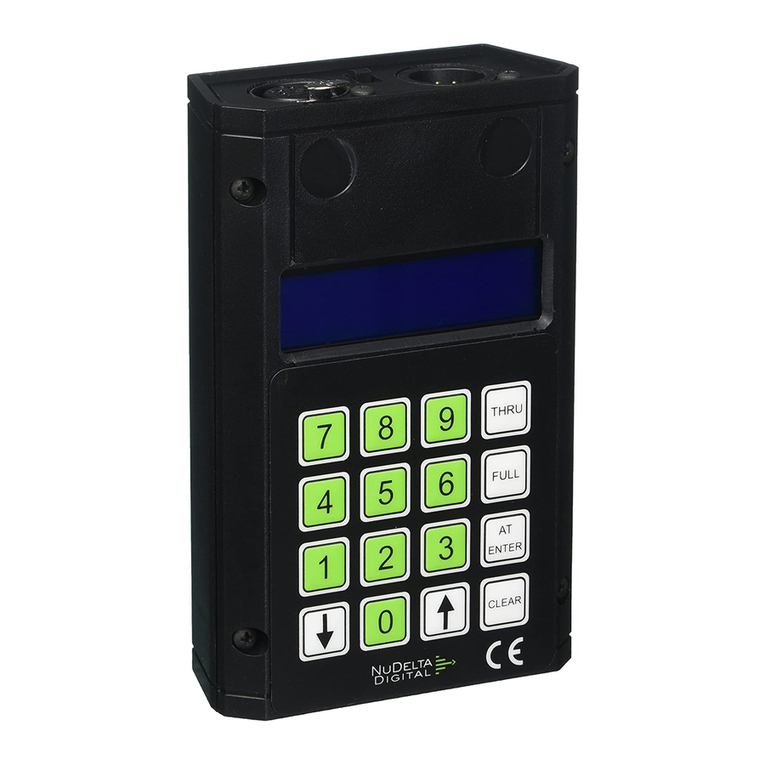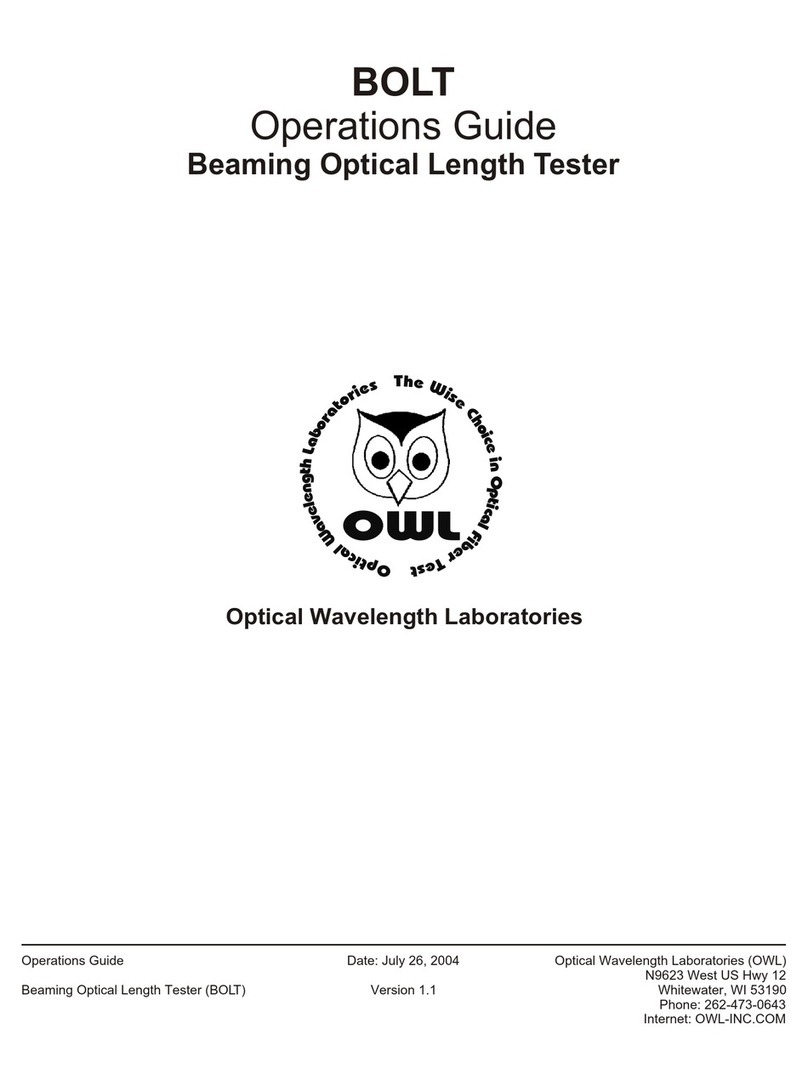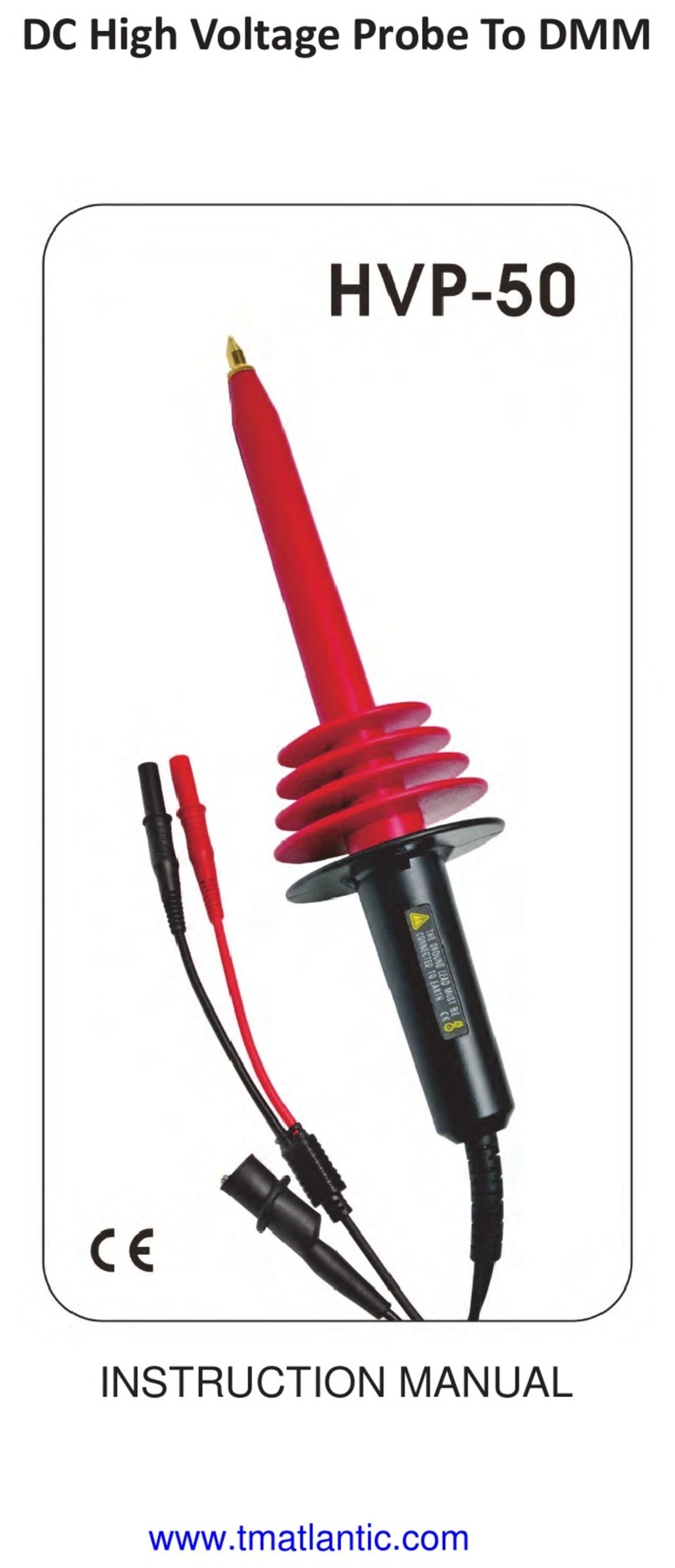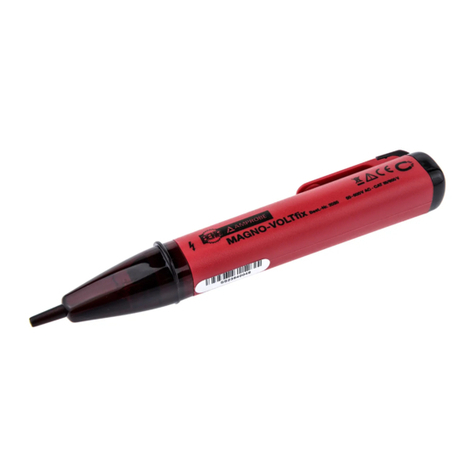Sonotec Airborne Sound Sensor BS10 Operator's manual

Ultrasonic Testing Device for Preventive Maintenance
User Documentation:
Airborne Sound Sensor BS10

© SONOTEC Ultraschallsensorik Halle GmbH
All rights reserved.
Revision: 1.0; Date: 2017-11-06
Subject to technical modifications

Airborne Sound Sensor BS10
II - I - 3
Revision: 1.0; Date: 2017-11-06
Content
1Information on this document.............................................................................................................. 5
1.1 General...........................................................................................................................................5
1.2 Symbols used.................................................................................................................................6
2Description of the airborne sound sensor BS10................................................................................ 7
2.1 Applications and designated use ...................................................................................................7
2.2 Functioning.....................................................................................................................................7
2.3 Connections, operating and display elements...............................................................................8
2.4 Airborne sound sensor BS10 accessories...................................................................................10
2.5 Device identification/type label.....................................................................................................11
3Operation of the airborne sound sensor........................................................................................... 12
3.1 Connecting the sensor and attaching accessory parts................................................................12
3.2 Operation via the buttons on the sensor......................................................................................13
3.3 Cleaning and maintenance ..........................................................................................................13
4Disposal................................................................................................................................................ 14
5Warranty............................................................................................................................................... 15

Airborne Sound Sensor BS10
II - I - 4
Revision: 1.0; Date: 2017-11-06
(This page has been deliberately left empty)

Airborne Sound Sensor BS10
II - I - 5
Revision: 1.0; Date: 2017-11-06
1 Information on this document
1.1 General
This document forms part of the airborne sound sensor BS10 and should therefore be stored in
its immediate vicinity where it can be accessed by all operators at any time. It contains all the
instructions to ensure safe operation of the airborne sound sensor with the SONAPHONE, as
well as all the information needed to ensure proper and efficient use. It must therefore be read
prior to first use and before carrying out any further steps.
The airborne sound sensor BS10 must only be operated by users who
have read (in full) and understood the safety information in the
corresponding document and the provided user documentation.
This document has been created with all due care. SONOTEC does not assume any guarantee
of the completeness, correctness and current validity of the provided data, and is not liable for
errors or omissions.
Please note that the user documentation for the SONAPHONE is made up of different sections
due to the device's modular construction. The scope of supply will vary depending on the device
and accessory options that have been ordered.

Airborne Sound Sensor BS10
1 Information on this document
II - I - 6
Revision: 1.0; Date: 2017-11-06
1.2 Symbols used
Hazards or special information are indicated in the following ways:
Warns of possible imminent dangers which, if ignored, may lead to
lasting adverse health effects and/or serious material damage.
Warns of dangers which, if ignored, may lead to injury and/or material
damage - including financial losses due to operational interruptions.
Warns of dangers which, if ignored, may lead to material damage -
including financial losses due to operational interruptions.
Note
This section provides information or draws attention to specific features.

Airborne Sound Sensor BS10
II - I - 7
Revision: 1.0; Date: 2017-11-06
2 Description of the airborne sound sensor BS10
2.1 Applications and designated use
The airborne sound sensor with accessories for different testing work has been specially
designed for the following tasks:
Detection and evaluation of leaks in compressed air, gas and vacuum systems
(depending on the app)
Tightness Testing of windows, doors, vehicles or containers
(in combination with the SONAPHONE T ultrasonic transmitter)
Detection of electrical partial discharges and insulation damage
2.2 Functioning
The sensor attachments guide the ultrasound to the ultrasonic microphone.
The ultrasonic microphone inside the sensor converts sound pressure fluctuations in the air to
an electrical signal over a wide frequency range. This electrical signal is amplified and
digitalized within the sensor. Further data processing and output takes place in the testing
device.
The target laser helps with the precise location of damaged areas:
If the sensor points towards the damaged area during the search, the precise location can be
detected by means of acoustic signals, by pivoting the sensor and searching for a local
maximum sound level. The target laser marks the approximate position of the damaged area.
The LED light serves as a torch, making it easier to search for damaged areas in poorly lit
environments.

Airborne Sound Sensor BS10
2 Description of the airborne sound sensor BS10
II - I - 8
Revision: 1.0; Date: 2017-11-06
2.3 Connections, operating and display elements
No. Operating and display elements
1 Sensor accessory: Small acoustic horn (standard)
2 Adjusting the volume
3 Starting/stopping the measurement recording
4 Target laser on (press and hold)
5 LED light (torch) on/off
6 Status LED
1
3
4
2
6
5

Airborne Sound Sensor BS10
2 Description of the airborne sound sensor BS10
II - I - 9
Revision: 1.0; Date: 2017-11-06
No. Sensor elements
1 Target laser (do not look into the beam! Laser class 2)
2 Ultrasonic microphone
3 LED light (torch)
No. Connections
1 USB connection (for service work only)
2 Socket for sensor cable with marked plug-in position
2
1
3
1
2

Airborne Sound Sensor BS10
2 Description of the airborne sound sensor BS10
II - I - 10
Revision: 1.0; Date: 2017-11-06
2.4 Airborne sound sensor BS10 accessories
The intensity and behavior of ultrasonic signals depend on factors such as the process during
which they are generated. Options for verifying and recording the signals and for providing
these to the user in high-quality format so that sensible statements can be made with regard to
system conditions are also dependent upon a number of different factors.
In order to guide signals to the ultrasonic microphone on the airborne sound sensor BS10 in a
high-quality format, a number of different attachments are available for different testing tasks. In
order to ensure optimal results, please observe the fields of application for the accessories as
well as the corresponding instructions.
Small acoustic horn BS10-2
Attachment for airborne sound sensor BS10 (standard)
The channeling and directing of the ultrasonic signals via the small, funnel-shaped horn BS10-
2
improves the signal strength at the ultrasonic microphone. This allows for the verification of
damaged areas at medium distances. Using the target laser allows the area to be narrowed
down for subsequent precise location.
Note: Use the precise locator BS10-1 for extremely accurate verification.
Large acoustic horn BS10-3
(optional)
Attachment for airborne sound sensor BS10
Application:
Location of damaged areas at
large distances
If the systems and system components being tested are large distances apart, the large
acoustic horn should be used to narrow down the search area. The funnel pools the ultrasonic
signals over large distances, allowing for verification with the SONAPHONE. Areas where
ultrasonic signals can be
verified in this way can then undergo precise location using the precise
locator BS10-1.
Note: Continue with precise location using the small acoustic horn BS10-2 or use the precise
locator BS10-1 to accurately locate damaged areas.

Airborne Sound Sensor BS10
2 Description of the airborne sound sensor BS10
II - I - 11
Revision: 1.0; Date: 2017-11-06
Precise locator BS10-1 (optional)
Attachment for airborne sound sensor BS10
Application:
Precise location of damaged areas
at close range
The precise locator BS10-1 is used in close range applications for the accurate verification of
ultrasonic signals. The attachment consists of two parts that are connected and can be rotated,
meaning that the tip can be rotated towards the damaged area being located.
Note: Mark the damaged area with a leak tag.
2.5 Device identification/type label
Laser class identification:
The type label is located on the back of the device, and should be to hand in the event of a
service call. As well as the sensor designation, the following information can also be found on
the housing:

Airborne Sound Sensor BS10
II - I - 12
Revision: 1.0; Date: 2017-11-06
3 Operation of the airborne sound sensor
Risk of injury to eyes
The target laser (laser class 2) can cause serious eye damage. Never look
into the laser beam. Never direct the laser at other people or vehicles.
Please note that reflected laser light can cause eye injuries in the event of
prolonged use.
3.1 Connecting the sensor and attaching accessory parts
Risk of damage to the connectors
Take note of the red dots indicating the plug-in position on the plug and
socket.
Connect the sensor to the SONAPHONE in accordance with the red dots, making sure to
use the designated cable.
The sensor is powered via the cable, and the test data is transferred to the SONAPHONE
automatically.
The sensor is ready for operation when the operating display LED lights up green.
The sensor accessory parts are simply attached onto the sensor shaft for assembly, and
removed for disassembly.
Note
Make sure that the accessory parts are securely positioned on the sensor
shaft. The ultrasound is guided to the microphone by the attachments.
Misaligned sensor attachments may have an impact on the signals.
The directional characteristics of the target laser may also be affected.

Airborne Sound Sensor BS10
3 Operation of the airborne sound sensor
II - I - 13
Revision: 1.0; Date: 2017-11-06
3.2 Operation via the buttons on the sensor
Measurements can be controlled via the touchscreen on the device or via the buttons on the
sensor itself.
The acoustic playback volume can be adjusted using the function buttons. Testing can also be
started and stopped. The integrated target laser and the LED light (torch) also help with the
precise location of damaged areas.
3.3 Cleaning and maintenance
The sensor is maintenance-free. It can be cleaned externally using a damp cloth and a mild,
non-abrasive cleaning agent.

Airborne Sound Sensor BS10
II - I - 14
Revision: 1.0; Date: 2017-11-06
4 Disposal
Electrical and electronic equipment can pose serious health and environmental risks if it is
not properly disposed of. For this reason it must not be disposed of in domestic waste according
to WEEE directive 2012/19/EU (Waste Electrical and Electronic Equipment Directive) but
separately at designated collection points or has to be sent back to the manufacturer.
The following symbol on the device refers to the legal obligation in Germany to arrange a
separate disposal for electronic equipment.
It has to be handled according to specific processes (e.g. concerning the batteries or circuit
boards) to ensure a safe, environmentally-friendly recycling or the separate disposal of different
device components.
The taking back of used equipment is regulated differently in the various countries and regions.
Consult the local authorities and other competent public authorities to inform yourself about the
taking back conditions of commercially used electrical equipment. The device and also the
battery do not contain harmful substances that have to be labelled separately regarding the
disposal as mercury (Hg), cadmium (Cd), lead (Pb) or hexavalent chromium (e.g. in galvanized
parts or circuit boards).

Airborne Sound Sensor BS10
II - I - 15
Revision: 1.0; Date: 2017-11-06
5 Warranty
The SONAPHONE ultrasonic testing device and its corresponding sensors comply with the
current state of the art and the safety regulations. All devices and accessory parts are factory
tested and are delivered in a safe condition for operation. We reserve the right to make
modifications to the device as part of ongoing product development, and to make changes to
the shape and color.
Within the warranty period, SONOTEC Ultraschallsensorik Halle GmbH will rectify, free of
charge, all defects caused by material or manufacturing errors. At its own discretion, SONOTEC
Ultraschallsensorik Halle GmbH will provide a guarantee in the form of either a repair or the
replacement of the defective device or component. The warranty does not cover the internal
batteries or damage caused by improper use, wear or interventions in the device or sensors.
The warranty also does not cover any defects that have only a negligible impact on the value or
usability of the device.
The recording of valid test results, the interpretation of these results and any measures that are
derived as a result are exclusively the responsibility of the user. SONOTEC does not assume
any guarantee for the correctness of the recorded test values or test results. SONOTEC accepts
no liability for any errors or damages that arise as a result of the further use of the recorded test
and measurement values.

MANUFACTURER
Headquarters
SONOTEC Ultraschallsensorik Halle GmbH
Nauendorfer Str. 2
06112 Halle (Saale)
Phone: +49 (0)345 133 17-0
Fax: +49 (0)345 133 17-99
Email: sonotec@sonotec.de
Internet: www.sonotec.de
USA contact details
SONOTEC US Inc.
190 Blydenburgh rd
Suite 8 2nd floor
Phone: +1 631/415 4758
Email: sales@sonotecusa.com
Internet: www.sonotecusa.com

Technical Data Sheet
V - II - 1
Revision: 1.0; Date: 2017-11-06
Airborne sound sensor BS10
The airborne sound sensor BS10 with comprehensive
accessories has been specially designed for the following
testing work in combination with the SONAPHONE:
•Detection and evaluation of leaks in compressed air,
gas and vacuum systems
•Tightness testing of windows, doors, vehicles or
containers (in combination with the SONAPHONE T
ultrasonic transmitter)
•Detection of electrical partial discharges and insulation
damage
The acoustic playback volume can be adjusted using the fu
nction buttons. Testing can also be
started and stopped. The integrated target laser and the LED lights help with the precise location of
damage areas.
GENERAL SENSOR DATA
Design Sensor for the detection of airborne ultrasonic signals with exchangeable
attachments, target lasers and LED lights
Operation Via buttons on the sensor or on the device;
Buttons: Start/stop testing, laser, LED lights, volume
Frequency range 20 … 100 kHz
Measurement resolution 1 dB
Power supply and
communication Cable connection with the SONAPHONE (160 cm): LEMO connection
Dimensions (W x H x D) 30 x 155 x 30 mm
Weight 80 g (without accessories)
Materials Sensor housing: plastic (polycarbonate: ABS), gray;
Attachments: synthetic rubber (EPDM), black
AMBIENT CONDITIONS
Operating temperature -10 °C … +40 °C
Storage temperature -20 °C … +60 °C
Protection type IP40

Technical Data Sheet
Airborne sound sensor BS10
V - II - 2
Revision: 1.0; Date: 2017-11-06
Standards and
guidelines EMC Directive 2014/30/EU; WEEE Directive 2012/19/EU;
RoHS Directive 2011/65/EU; ASTM E1002-2005
Accessories
(some of which are
optional)
Attachments to boost the acoustic signal strength:
Small acoustic horn BS10-2 for close range
Large acoustic horn BS10-3 for larger distances
Precise locator BS10-1 for the precise location of damage areas
Subject to technical modifications!
MANUFACTURER
SONOTEC
Ultraschallsensorik Halle GmbH
Nauendorfer Straße 2
06112 Halle (Saale), Germany
Tel.: +49 (0)345/133 17
- 0
sonotec@sonotec.de
www.sonotec.de
USA CONTACT DETAILS
SONOTEC US Inc.
190 Blydenburgh rd
Suite 8 2
nd floor
Islandia, New York 11749, USA
Tel.: +1 631/415 4758
sales@sonotecusa.com
www.sonotecu
sa.com
Other manuals for Airborne Sound Sensor BS10
1
Table of contents
Other Sonotec Test Equipment manuals
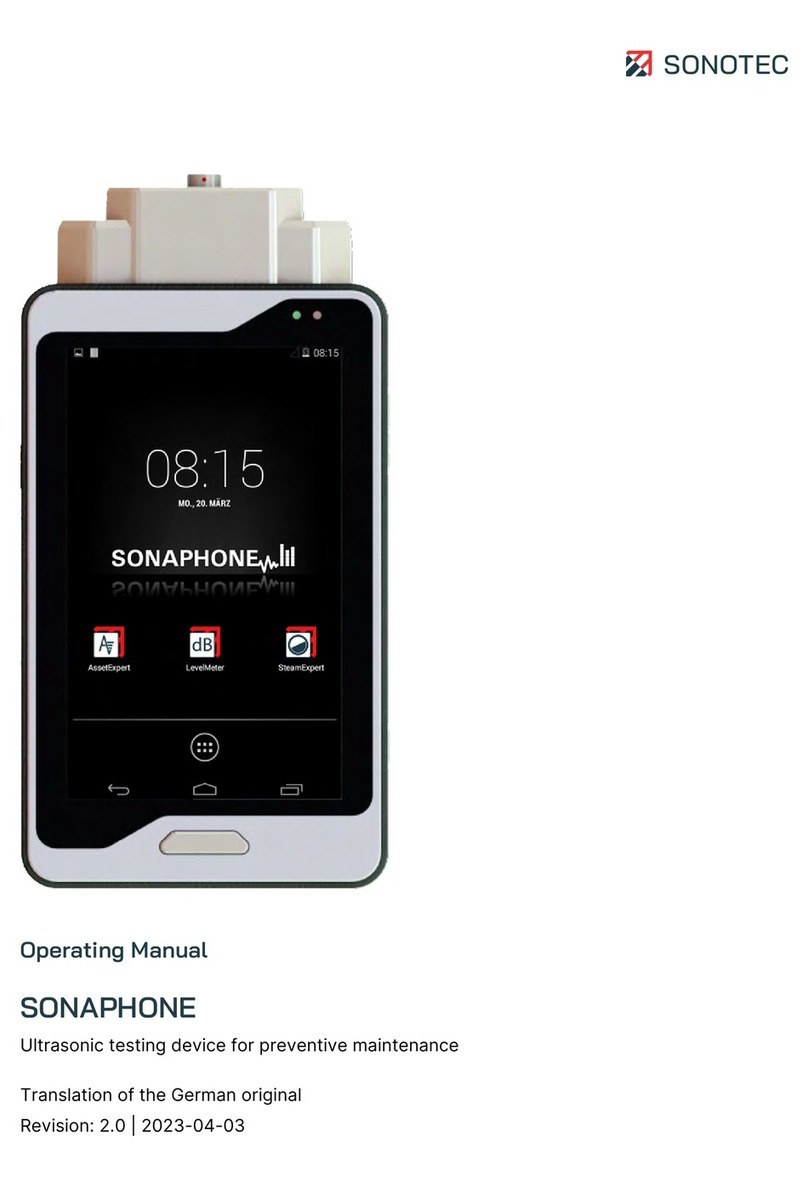
Sonotec
Sonotec Sonaphone User manual
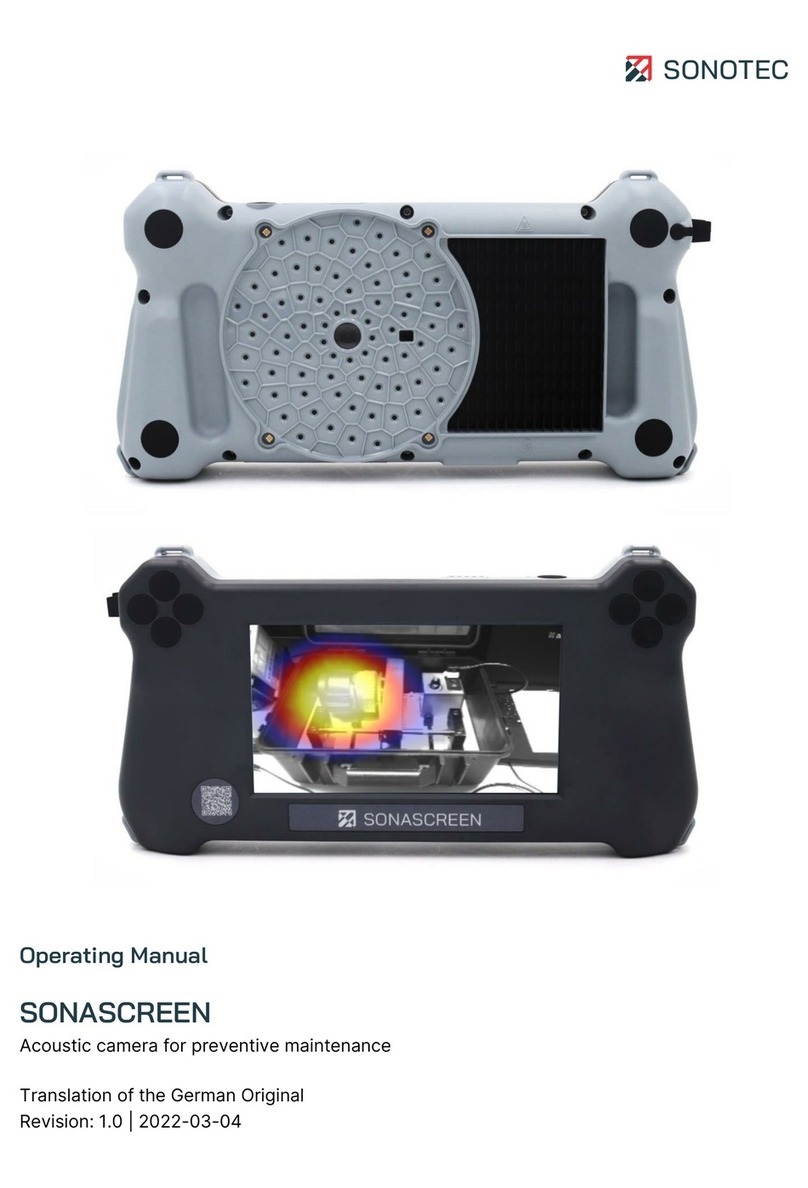
Sonotec
Sonotec SONASCREEN User manual
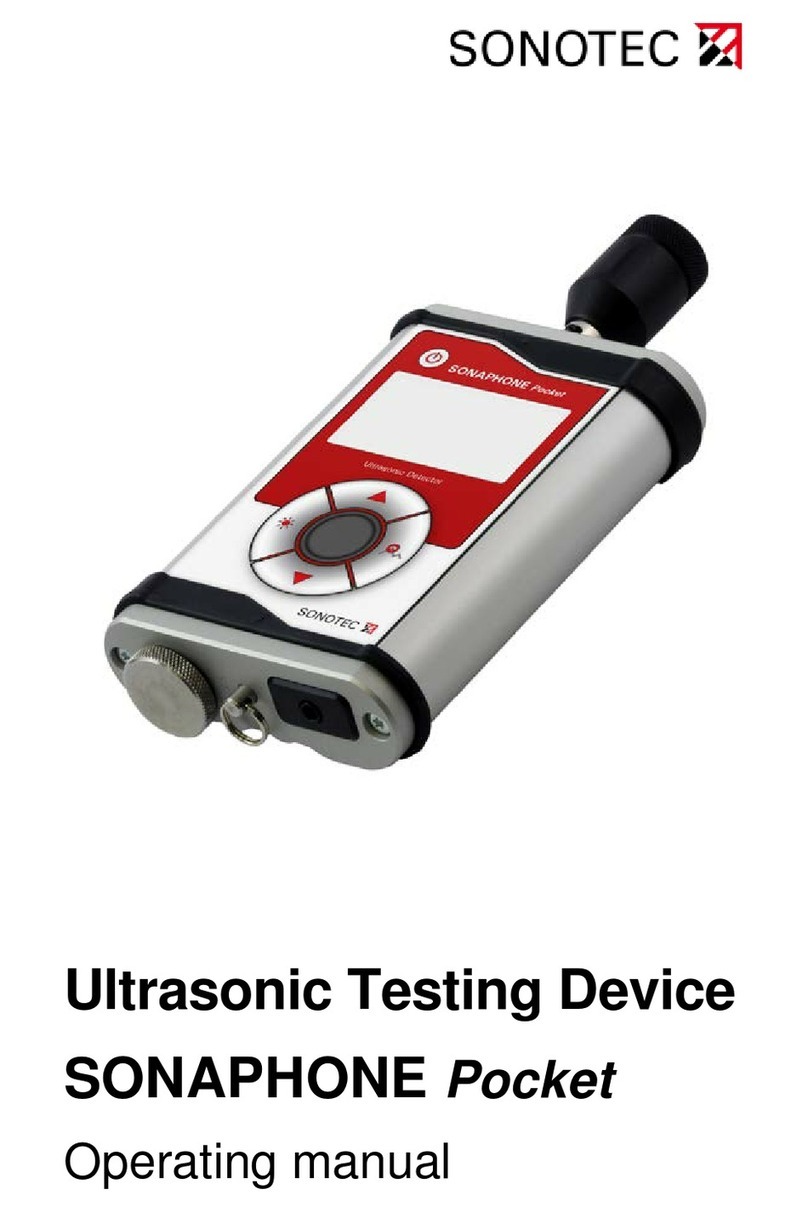
Sonotec
Sonotec Sonaphone Pocket User manual
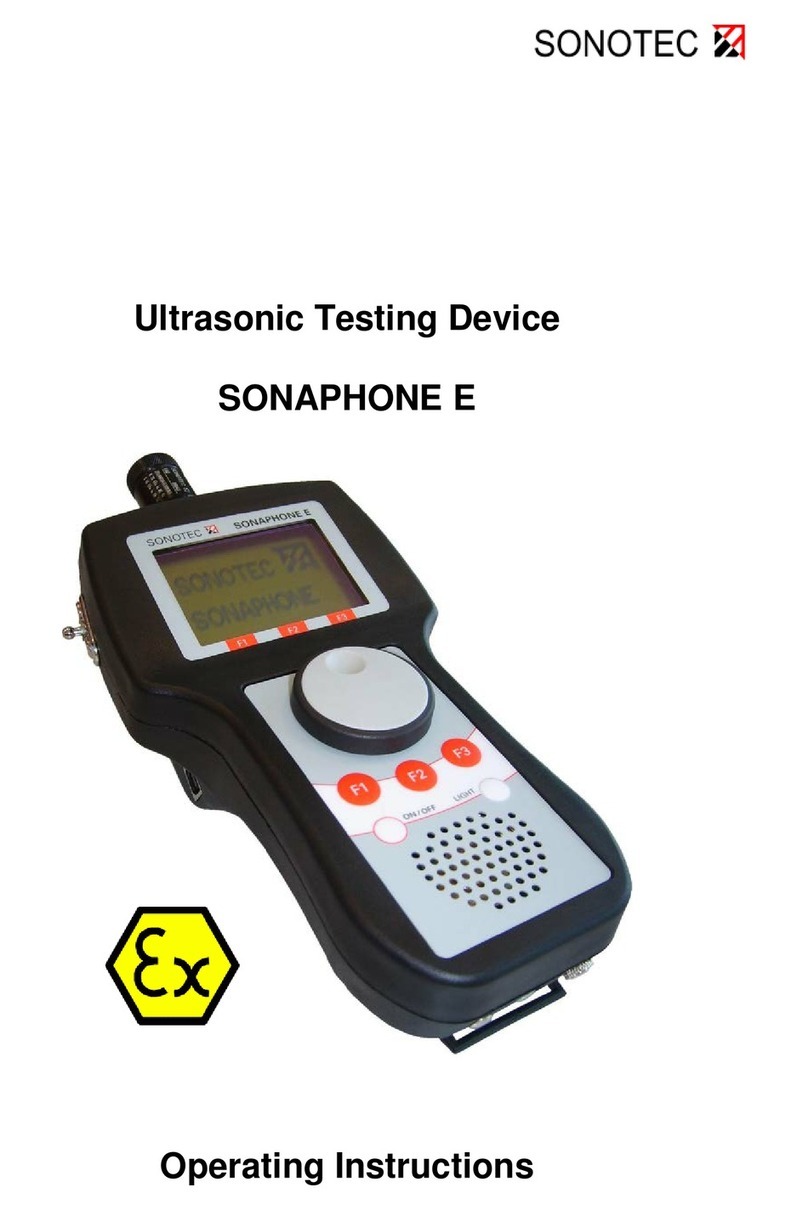
Sonotec
Sonotec SONAPHONE E User manual
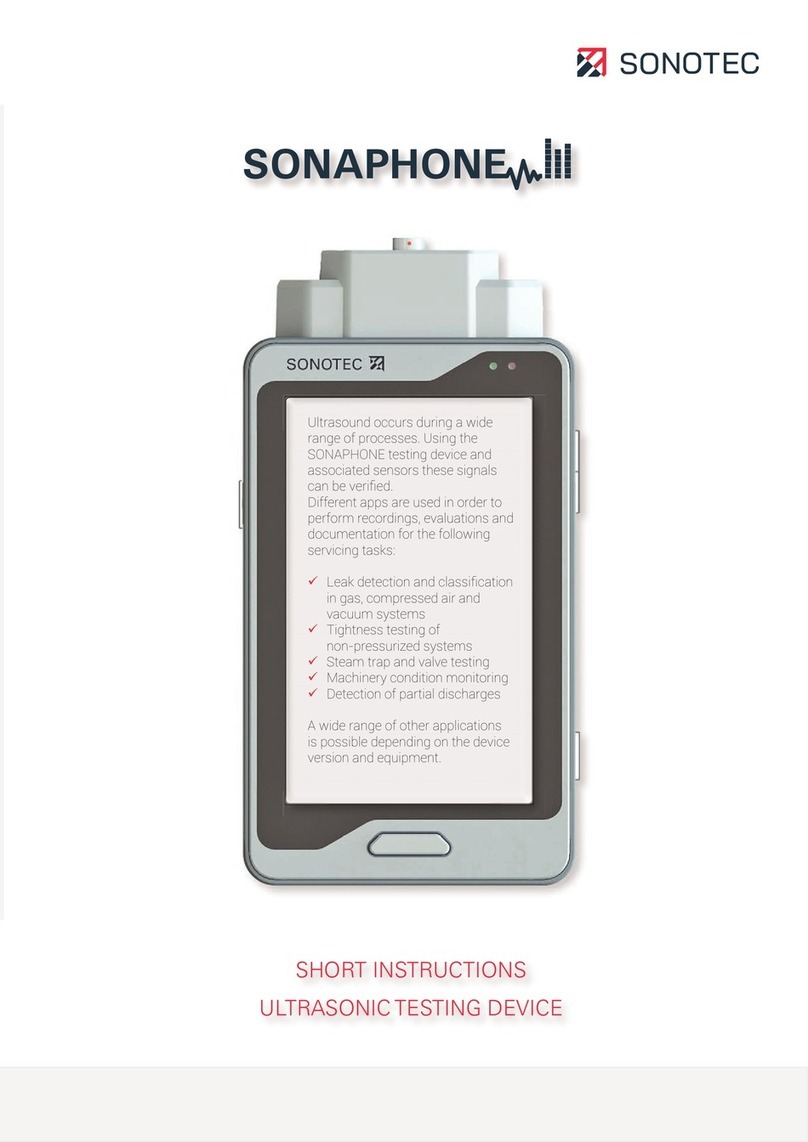
Sonotec
Sonotec Sonaphone Manual

Sonotec
Sonotec SONAPHONE E User manual

Sonotec
Sonotec Sonaphone Manual

Sonotec
Sonotec SONO-PR 200 User manual

Sonotec
Sonotec Sonaphone Operator's manual

